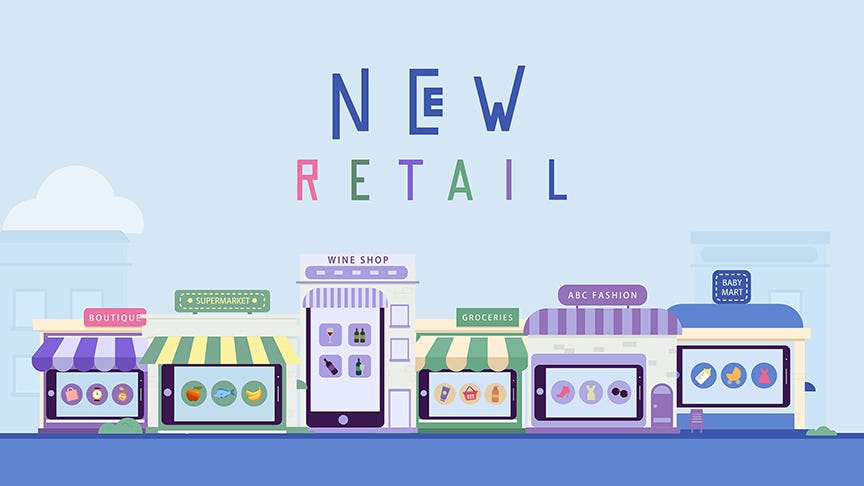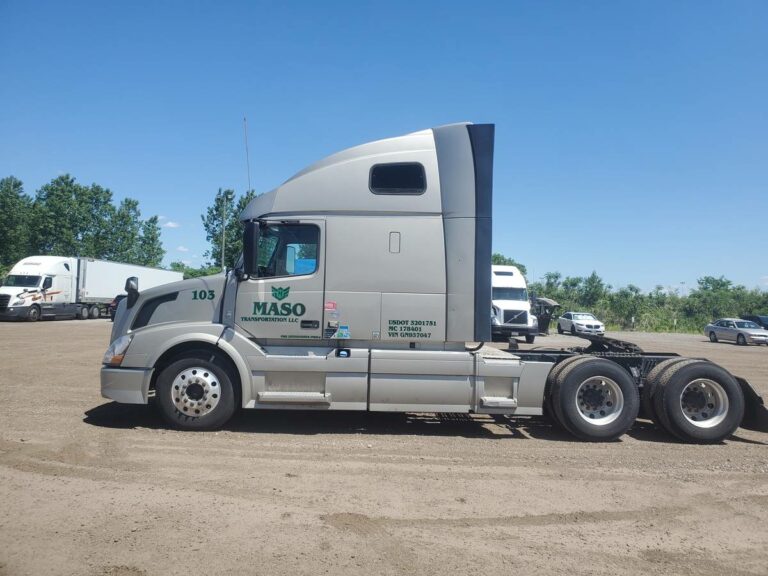What Is A Retail Regional Driver: Navigating the Lifeline of Modern Commerce
What Is A Retail Regional Driver: Navigating the Lifeline of Modern Commerce cars.truckstrend.com
In the vast and intricate world of logistics and supply chain, a pivotal role often goes unnoticed by the everyday consumer: the Retail Regional Driver. These unsung heroes are the backbone of modern commerce, the vital link ensuring that the products we rely on—from groceries to electronics, clothing to home goods—seamlessly transition from distribution centers to the shelves of our favorite retail stores. Far more than just someone who drives a truck, a retail regional driver is a highly skilled professional responsible for the efficient, safe, and timely movement of goods within a specific geographical area, directly impacting everything from inventory levels to customer satisfaction.
This comprehensive guide will delve deep into the world of the retail regional driver, exploring their responsibilities, the skills required, the lifestyle, and the significant impact they have on the economy. If you’re considering a career in trucking that offers a unique blend of consistency and vital importance, understanding this role is your first essential step.
What Is A Retail Regional Driver: Navigating the Lifeline of Modern Commerce
What Exactly Does a Retail Regional Driver Do?
At its core, a retail regional driver’s primary responsibility is to transport merchandise and supplies from a company’s distribution centers (DCs) or warehouses to its network of retail stores. Unlike Over-The-Road (OTR) drivers who might be away from home for weeks, regional drivers operate within a defined geographical radius, typically allowing them to return home daily or at least several times a week.
Their daily tasks are multifaceted and demanding:
- Pre-Trip Inspections: Before hitting the road, drivers conduct thorough inspections of their vehicle (tractor and trailer) to ensure it’s safe and compliant with Department of Transportation (DOT) regulations. This includes checking tires, brakes, lights, fluid levels, and more.
- Loading and Unloading: Depending on the company and the type of freight, drivers may be responsible for physically loading or assisting with the loading of their trailers at the DC and then unloading or assisting with unloading at the retail store. This can involve using pallet jacks, hand trucks, or simply organizing freight. Many roles are "no-touch freight," where warehouse or store staff handle loading/unloading.
- Route Navigation and Adherence: Drivers must meticulously follow predetermined routes and adhere to strict delivery schedules, often making multiple stops per day. This requires excellent navigation skills and the ability to adapt to traffic, weather, or unexpected delays.
- Paperwork and Documentation: Maintaining accurate logs (electronic or paper), delivery receipts, bills of lading, and other essential documentation is crucial for tracking inventory and ensuring compliance.
- Communication: Regular communication with dispatch, warehouse personnel, and store managers is vital to coordinate deliveries, report issues, and ensure smooth operations.
- Equipment Operation: Most retail regional drivers operate Class A commercial vehicles, typically tractor-trailers (dry vans or refrigerated "reefers"), but some roles might involve Class B box trucks for smaller, localized deliveries.

The Indispensable Role of Retail Regional Drivers in the Supply Chain
The significance of retail regional drivers cannot be overstated. They are the arteries of the retail supply chain, directly influencing a store’s ability to serve its customers and, by extension, the company’s profitability and reputation.

- Ensuring Product Availability: Their most direct impact is keeping shelves stocked. Without timely deliveries, stores face stockouts, leading to lost sales and frustrated customers. A regional driver ensures that the latest products, seasonal items, and everyday essentials are always available.
- Optimizing Inventory Management: By delivering goods precisely when needed, these drivers help retailers maintain optimal inventory levels, reducing the need for excessive storage space and minimizing carrying costs.
- Enhancing Customer Satisfaction: When customers find what they need, their shopping experience is positive, fostering loyalty and repeat business. The reliability of the regional driver contributes directly to this.
- Supporting Store Operations: Beyond just products, drivers often deliver essential supplies, fixtures, and marketing materials that are critical for a store’s day-to-day functioning.
- Economic Impact: The efficiency of retail logistics, heavily reliant on these drivers, underpins the entire retail economy, supporting countless jobs from manufacturing to sales.

In essence, while the glamour might go to the marketing campaigns or product launches, it’s the consistent, reliable work of the retail regional driver that truly brings the retail experience to life for consumers.
Essential Skills and Qualifications for a Retail Regional Driver
To excel in this demanding yet rewarding profession, a specific set of skills and qualifications is required:
- Commercial Driver’s License (CDL): A Class A CDL is almost universally required for operating the large tractor-trailers common in retail logistics. Some roles for smaller trucks might only require a Class B CDL. Specific endorsements (e.g., HazMat for certain goods, Tanker for bulk liquids) may also be necessary depending on the freight.
- Clean Driving Record: Employers demand a spotless driving history, free of major violations, due to the immense responsibility of operating heavy vehicles and carrying valuable cargo.
- Physical Fitness: The job requires physical stamina. Drivers must be able to climb in and out of trucks, lift and move freight (if applicable), push/pull heavy loads, and endure long periods of sitting. A DOT medical card, certifying physical fitness, is mandatory.
- Time Management and Punctuality: Strict delivery windows are common. Drivers must be adept at managing their time, planning breaks, and navigating efficiently to meet deadlines.
- Navigation and Route Planning: Familiarity with GPS systems, understanding road conditions, and the ability to plan alternative routes are crucial.
- Communication Skills: Clear and concise communication with dispatch, store personnel, and occasionally customers is vital for problem-solving and ensuring smooth operations.
- Problem-Solving Abilities: Unexpected issues like traffic jams, vehicle breakdowns, or delivery complications require quick thinking and effective solutions.
- Attention to Detail: Accuracy in paperwork, adherence to safety protocols, and careful handling of merchandise are paramount.
- Customer Service Orientation: As representatives of the company, drivers interact with store staff and sometimes customers, requiring a professional and courteous demeanor.
The Lifestyle and Benefits of a Retail Regional Driver
One of the most appealing aspects of becoming a retail regional driver, especially when compared to Over-The-Road (OTR) trucking, is the significantly improved work-life balance.
- Predictable Home Time: This is often the biggest draw. While some regional routes might involve one or two nights away from home, many allow drivers to be home daily. This consistency is invaluable for family life and personal commitments.
- Consistent Routes: Many regional drivers operate on dedicated or semi-dedicated routes, meaning they become familiar with the roads, the stores, and the routines, leading to greater efficiency and less stress.
- Competitive Compensation: Retail regional drivers typically earn a very respectable income, often ranging from $60,000 to $85,000+ annually, depending on experience, location, and the specific company. This often comes with comprehensive benefits packages including health, dental, and vision insurance, 401(k) plans, and paid time off.
- Job Security: The retail sector, particularly with the growth of e-commerce, consistently demands efficient logistics. This ensures a steady demand for skilled regional drivers, offering excellent job stability.
- Autonomy: While adhering to schedules, drivers largely operate independently once on the road, offering a sense of freedom and responsibility.
- Regular Schedule: Compared to the often unpredictable nature of OTR, regional routes often have more consistent start and end times, allowing for better personal planning.
Navigating the Challenges: Solutions for Retail Regional Drivers
While offering many benefits, the role of a retail regional driver is not without its challenges. However, most have practical solutions:
- Traffic and Delays: Urban driving can be notoriously slow.
- Solution: Utilize real-time traffic apps, plan routes with potential alternatives, and communicate proactively with dispatch and stores about delays.
- Tight Delivery Schedules: Meeting multiple deadlines in a day can be stressful.
- Solution: Master time management, optimize loading/unloading procedures, and ensure all pre-trip checks are efficient.
- Physical Demands: Lifting, bending, and prolonged sitting can take a toll.
- Solution: Practice proper lifting techniques, incorporate regular stretching and exercise, and utilize ergonomic seating and equipment when available.
- Adverse Weather Conditions: Driving in snow, ice, or heavy rain increases risk and difficulty.
- Solution: Prioritize defensive driving, stay informed about weather forecasts, and adhere strictly to company protocols for adverse conditions.
- Stress and Fatigue: Long hours and demanding schedules can lead to burnout.
- Solution: Prioritize quality rest, manage stress through healthy habits, and utilize company support systems or EAPs.
- Unforeseen Issues: Mechanical breakdowns, road closures, or miscommunications can happen.
- Solution: Develop strong problem-solving skills, maintain clear communication with dispatch, and remain adaptable and patient.
- Technology Integration: Learning new ELD (Electronic Logging Device) systems, telematics, and route optimization software.
- Solution: Embrace training, ask questions, and recognize that these tools are designed to improve efficiency and compliance.
Your Path to Becoming a Retail Regional Driver
If the role of a retail regional driver sounds like a promising career, here’s a typical path to get started:
- Obtain Your Commercial Learner’s Permit (CLP): Pass the written knowledge tests for the CDL class you intend to pursue (typically Class A).
- Enroll in a Truck Driving School: While not always legally required, a reputable CDL training program is highly recommended. These programs provide essential hands-on driving experience, prepare you for the CDL skills test, and teach critical safety regulations.
- Pass the CDL Skills Test: Once trained, you’ll take a comprehensive driving test that includes a pre-trip inspection, basic vehicle control skills (like backing), and an on-road driving test.
- Gain Experience: Some regional carriers hire new CDL graduates, offering excellent entry-level opportunities with better home time. Others may prefer drivers with 6 months to 1 year of experience. If direct regional entry is challenging, consider starting with a company that offers OTR training, then transition to regional once you’ve gained experience.
- Build a Clean Driving Record: Maintain a stellar driving history throughout your career.
- Job Search: Utilize online job boards, company career pages, and trucking-specific recruitment agencies. Many large retail chains operate their own private fleets and are excellent places to look.
- Interview and Onboarding: Be prepared to discuss your commitment to safety, reliability, and customer service. Many companies offer paid orientation and ongoing training.
Career Progression and the Future Outlook
A career as a retail regional driver offers significant stability and potential for growth.
- Advancement Opportunities: Experienced drivers can progress to roles such as lead driver, driver trainer, safety supervisor, or even move into dispatch or operations management within the logistics department.
- Industry Trends: The growth of e-commerce continues to fuel demand for efficient regional delivery services. While autonomous trucking is a long-term prospect, human drivers will remain essential for complex urban deliveries, "last mile" services, and handling unexpected situations for the foreseeable future.
- Technology Adoption: Drivers will increasingly interact with advanced telematics, route optimization software, and safety features in newer trucks, making the job more data-driven and potentially safer.
- Job Stability: The essential nature of retail logistics ensures that demand for skilled regional drivers is expected to remain robust, offering a secure career path.
Retail Regional Driver: At a Glance
To provide a quick overview of the key attributes and "value proposition" of this career, here’s a summary:
| Feature | Description / Value |
|---|---|
| Role Definition | Transports goods from distribution centers to retail stores within a defined region. |
| Primary CDL Required | Class A CDL (tractor-trailer) is most common; Class B (box truck) for some roles. |
| Typical Home Time | Daily to 2-3 nights out per week, significantly more home time than OTR roles. |
| Average Salary Range | $60,000 – $85,000+ annually (varies by experience, location, and company). |
| Required Experience | 0-1 year (many companies hire new CDL graduates for regional positions). |
| Key Skills | Driving proficiency, time management, communication, navigation, problem-solving, customer service. |
| Physical Demands | Requires ability to lift/move freight (if "touch freight"), prolonged sitting, DOT medical clearance. |
| Job Outlook | Stable and growing, driven by e-commerce expansion and consistent retail demand. |
| Typical Benefits | Comprehensive health, dental, vision, 401(k), paid time off, life insurance. |
| Equipment Type | Primarily tractor-trailers (dry vans, refrigerated trailers), some box trucks. |
Frequently Asked Questions (FAQ)
Q: Is a Retail Regional Driver an Over-The-Road (OTR) driver?
A: No, generally not. OTR drivers often spend weeks away from home, crossing state lines or even the country. Retail regional drivers operate within a specific region, typically allowing them to be home daily or at least every few days.
Q: What kind of truck will I drive as a retail regional driver?
A: Most often, you’ll drive a Class A tractor-trailer, which could be a dry van (for general merchandise) or a refrigerated trailer (reefer) for perishable goods. Some shorter, local retail routes might utilize Class B box trucks.
Q: Do I need to unload the truck myself at the retail stores?
A: It varies by company and specific role. Some retail regional driver positions are "touch freight," meaning the driver is responsible for unloading the merchandise. Others are "no-touch freight," where store staff or a lumper service handles the unloading. This is an important question to ask during the job interview.
Q: What’s the typical work schedule like for a retail regional driver?
A: Schedules can vary. Some drivers work traditional day shifts, while others might have night shifts to avoid traffic or stock stores overnight. Weekends may also be part of the regular rotation. However, once established, many regional routes offer consistent schedules.
Q: How much money can a Retail Regional Driver make?
A: Salaries are competitive and depend on factors like experience, location, and the employer. Entry-level positions might start around $60,000 annually, while experienced drivers in high-demand areas can earn $85,000 or more per year, often with performance bonuses.
Q: Is this a good job for someone new to trucking who just got their CDL?
A: Yes, absolutely! Many retail companies with their own fleets or third-party logistics providers that service retail clients are willing to hire and train new CDL graduates for regional roles. This provides an excellent opportunity to gain experience with the added benefit of more home time compared to traditional OTR starter jobs.
Q: What are the main benefits of this role over traditional OTR trucking?
A: The primary benefit is significantly more home time, often daily or every 2-3 days. This leads to a better work-life balance. Additionally, regional routes often become familiar and predictable, reducing the stress of constantly navigating new territories.
Conclusion
The role of a retail regional driver is a critical, often understated, pillar of the modern economy. These dedicated professionals are the essential conduit connecting vast distribution networks to the local storefronts that serve communities daily. They offer a compelling career path for individuals seeking a dynamic role in logistics, blending the independence of the open road with the predictability and home time often lacking in other trucking sectors.
For those with a strong work ethic, a commitment to safety, and a desire to play a vital part in keeping the retail world turning, becoming a retail regional driver offers stability, competitive pay, and the satisfaction of knowing you are truly the lifeline of modern commerce.





